Labra Dog price in India:- Which breed comes to your mind when you think of a lovable, majestic, and ideal family pet? Yes, of course, a Labrador Retriever, which is the most docile and reliable dog for everyone.
The labrador is truly the dog for all seasons and reasons. There are many reasons to acquire a Labrador, good looking, trainability, loyalty, intelligence, etc. It could be that you are simply working for a nice puppy as a companion.
The Labrador Retriever is widely regarded as one of the most popular breeds of dog in the world. The breed is exceptionally friendly, intelligent, energetic, loving, and good-natured, making them excellent companions and working dogs.
Labrador Retrievers are known to be one of the fastest learning breeds of dogs that respond well to praise and positive attention.
Labra dog price in India

The Labrador Retriever is sometimes shortened to Labrador or Lab. More often you will see people calling the breed name “Labra dog” but the correct name is “Labrador Retriever”. The Labrador is a multipurpose dog with talents dating back to its gun dog years.
The Breed currently maintains utility in assistance to the blind and deaf, in police work, drug detection, and as a family dog. They are the most popular dog, by registration, in most of Europe and the United States.
Now if you are looking to buy a labrador dog then you may choose a puppy or a big dog. It depends upon your choice but the prices differ with both the option.
Remember, the information on prices may differ with your location. I am providing you an estimation of Labrador’s price in India.
Also remember female breed of any dog will be available as her health status and the number of times she has given birth to the puppies. But, if you are buying a labra puppy then both the male and the female puppy will cost you the same price.
If you are looking to buy a labrador retriever puppy from any pet shop in India then it will cost you around Rs 7000 to Rs 8000 depending upon its color and mom health. Whereas if you are buying a dog above the age of 2 years then it will cost you around Rs 12,000 to Rs 15,000.
The price also depends on the quality and the pedigree combination of the parents. However, the price starts to decrease if the age of a dog is above 10 years.
Read About:-
- Top 10 Cutest Dog Breeds | Most Adorable Dogs (2021)
- Pomeranian Dog Price in India | Appearance & Behaviour
Characteristics of Labra Dog

- Life Expectancy – 10 to 12 Years
- Learning Rate of Learning – High
- Size – Large
- Weight – For Male- 55 to 75 Pounds & For Female – 50 to 65 Pounds
- Height – 20 to 24 Inches
- Country of Origin – Newfoundland, Canada
They are intelligent, loving, and people-oriented dogs. They are happiest when they are with you which means they enjoy someone’s company.
They tend to be quite patient with children and are wonderful family dogs. Very agile, with an excellent nose and a great passion for water, the Lab steals everyone’s heart.
They have a very stable temperament, making them an excellent family dog. Extremely active, confident, and tenacious, this dog has a remarkably keen sense of smell. This breed has an even temper and is never aggressive.
He is a faithful friend, who will adapt to any situation. Devoted and very obedient, this dog is very cheerful. He has a fantastic visual memory. A lab has a style of its own. He is a dog with a lot of substance.
He is eager to please and is a non-aggressive pet. Labs will probably bark if a stronger approaches the home, but they are not aggressive guard dogs.
He can be a calm house dog, playful yard dog and intense field dog, all on the same day Labs are good-tempered, easy to train, eager to please, and devoted to their families.
“They are easy to live with because they are considered the most trainable of all breeds.” They are reliable with children and crave affection. Labrador Retrievers are people – and action-oriented dogs, and get bored if left to their own.
Untrained and unexercised they can be unmanageable due to their size and enthusiasm and he will often turn to destruction or escape to alleviate boredom and excess energy the require attention and love as much as food and water.
Labradors are easy to train which makes obedience work a fun way to interact with your dog. Labradors also require plenty of exercise, this is especially true since most labs love to eat. Proper exercise, training, and attention will give you a happy, healthy labrador
Labrador – The people’s choice
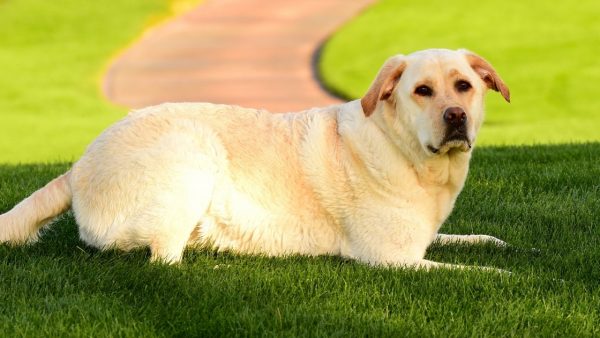
Labrador makes a great pet and the perfect companion and is very devoted to his owners. They do however need attention and affection from their masters.
The Labrador’s easy-going friendly temperament makes him a popular choice for a family dog. Labradors are popular because they are such friendly, eager dogs. They appeal to almost everyone.
They are good pets. They are good retrievers. They are good workers. You can keep a labrador in the city or in the town.
If you have to go on vacation, your Labrador will do well in a kennel or hostel while you are away. Labrador also gets along with other pets even kittens, horses, and birds.
The Labrador loves being busy, and, just as he helped fishermen 200 years ago, so he will try to be useful around the house – whether that involves bringing in the morning newspaper or fetching your slippers.
Your Labrador will love sharing his life with you and will do everything to show his devotion. They are loyal and loving character has assured the breed’s current success. Probably the breed will remain the most popular pedigree dog for the next 300 years.
Labrador – The dog for all reasons and seasons
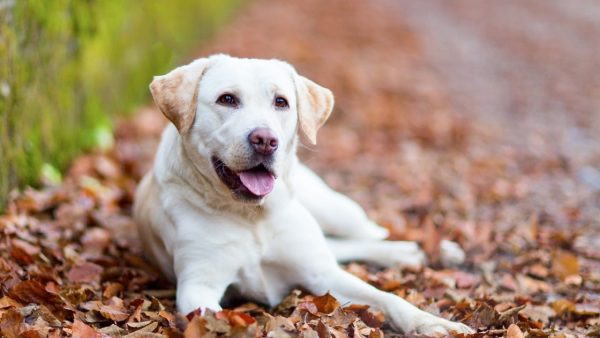
The Labrador is one of the cutest and the best all-round dogs to own and its popularity is well validated by the number of Labradors that are owned.
On the whole, a lab is a very accommodating dog, adjusting to your moods and your lifestyle.
If you are in the mood to play, jog or swim, your lab is with you. If you wish to lie down and have a nice siesta, you will still find your lab with you.
The lab will put up with almost anything from children’s love and are tolerant to the point of saintliness, asking for nothing more in life than to be with the family. He is timely a dog for all reasons and seasons.
Labrador – The perfect assistance dog
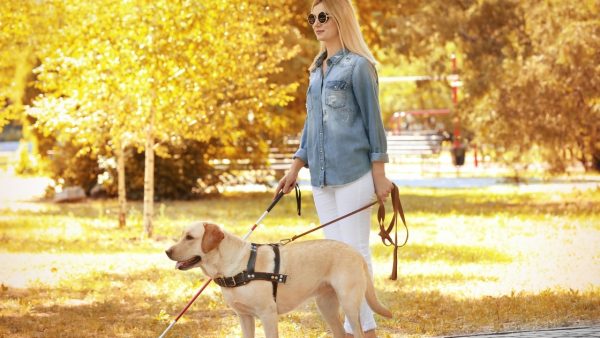
During World War II, Labrador retrievers carried an important message for the armed services. They found unexploded bombs.
Labradors were even taught to parachute. They jumped from airplanes to help U.S. Soldiers. Police forces began to use Labradors, too.
The dogs were good at tracking down criminals and finding hidden illegal drugs. They are still used widely by the police force today.
Labradors are very helpful in disasters. They can be trained to obey hand signals, and they are not frightened by loud noises. They will run through broken glass, dust, or smoke to find people who are hurt.
If you were asked which dog breed is perfect to be used as an assistance dog, most would reply “the Labrador”. They are the most popular pedigree assistance dogs. They could do almost any task that we demand as help.
Although many other breeds are used as guide dogs for the blind, hearing for the deaf, and dogs for the disabled, it is the Labrador that seems to have monopolized this niche.
Labrador has many qualities needed for a successful guide dog, and his keen working ability and amenable temperament make him an ideal choice for many owners.
Although Golden Retrievers, German Shepherd are still used as guide dogs but incredibly adaptable and easy-going, the Labrador is not a “complicated” breed. He wears his heart on his sleeve and suits many different owners.
Trained Labrador can perform a series of tasks for the disabled – for example, to open the door, opening a cupboard, take out a lead and close it again, fetch a coat and give it to the owner, turn off the light, and closing the door behind the owner.
Labrador can do much for the deaf as a hearing dog. He makes their deafness less of a disability. Hearing dogs acts as their owner’s Instructs and helps the owners in tasks like to set or snooze alarms, alerting them to many sounds like the doorbell, alarm clock, and cooker timer.
Labradors are used for so many charity uses because he is an adaptable dog who copes with varying situations and family life. This trainable, sociable nature makes him an ideal companion both in social situations and when working on sounds.
The Labradors alerts reliably to sounds, particularly as a food reward is used intermittently, the way to many of their hearts. Labrador is a wonderful dog who gives new and amazing to the deaf. They are excellent – “Seeing eye dog” for a blind person.
They are smart, loving, and easy to train. They are trustworthy. They always want to protect their owners from danger.
They hold the ability to make decisions on their own without being told what to do. No wonder many owners think the Labrador is the world’s best dog breed.
Labrador – Therapy dogs
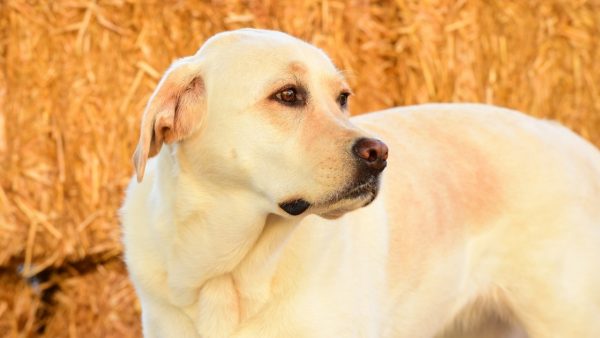
Labradors are also used as “therapy dogs”. In a nursing home, people feel less lonely if they have a big, friendly dog to pet. People in mental hospitals are helped by the affection Labrador gives so freely.
In children’s hospitals, labradors can fetch something dropped by a child in a wheelchair or hospital bed. Therapy dogs visit people of all ages who are unable to have a dog of their own, whether in hospitals, hospices, schools, residential homes, or prisons.
They have lovely temperaments, social nature and this makes them so popular as therapy dogs. Studies show that pets are beneficial to people’s health and well-being.
In schools, therapy dogs do a great job in educating children about dogs especially those who have never had them as pets and who may fear them. Having a cuddle with waggly, smiley Labrador is guaranteed to lift most people’s spirits, whatever their age or circumstances
The Labrador seeks open Space for Playing
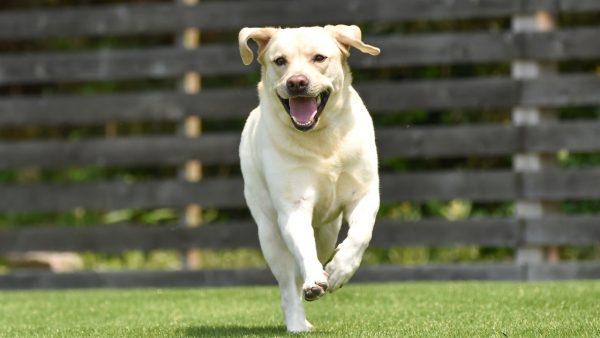
Before acquiring a Labrador, ask yourself why you want a Labrador. It may be simply because you can not resist the cute, angelic little bun le you have seen in TV, magazine, or newspaper advertisements. If this is the reason then think again.
A tiny, cute little puppy grows into a hefty adult which requires consistent care. Labrador needs outlets for their abundant energy, sizeable price of land for exercise. Do you have the space for a Labrador? If you live in a small apartment, perhaps, the smaller breed would suit you better.
If you are houseproud and will object to stubborn Labrador hairs getting all over the carpet, sofa, and milky clean marble floor, perhaps you should consider a nonshedding breed or a goldfish or a lovebird. Even though the breed has a short, dense coat he does not molt any less than any other dog.
Labrador is basically a gundog, he does not have a strong sense of territory, and he will not general his property the way a German shepherd or Dobermans will. The lab is more protective of his family and home.
Labrador likes to be close to your family inside the home. To keep a Labrador outdoors exclusively will be torture to the poor dog and such owners should consider a different breed or no dog at all.
Choosing a Puppy

Living with a Labrador puppy is a sheer joy. Your house will be full of cuddles, smiles, and laughter. and after just four days you will wonder how you ever lived without him.
Now you have decided to acquire a dog and choose the Labrador Retriever as the breed of your choice. Choosing a puppy can be very exciting but try not to let excitement overcome common sense. You want to choose a healthy puppy that will grow up to be the right dog for you.
First of all, never be in hurry. Never decide you must get a pup in two days because it is a young child’s birthday. Once you are sure that Labrador is the breed for you, it is worthwhile to spend a little time choosing the right puppy.
Try to see as many different Labradors as possible, so that you can choose the type you prefer. Whether you want a Labrador as a companion or a show dog, it is important to locate breeders with a reputation for producing sound, healthy, good-quality puppies.
Remember, this is to be your companion and your family’s companion for the next 12 years or so. If you have a young family, or you plan to have children, it is a good idea to have a puppy grow up with them, providing you give the pup the attention he deserves or that he has got used to prior to the advent of a baby.
First, you need to decide what kind of a Labrador you want. Do you want a champion that will win a competition or do you want a lovable pet? A dog breed from champion parents will cost more than a dog breed to be a pet
If you would like your pet to participate in a dog show or are interested in the breeding of dogs, the breeder will ensure that you get a good quality puppy, because the pup will carry the breed breeder’s prefix and this will reflect on the kennel’s reputation.
It might take many months but it is worth a wait to get the right puppy. However, if you wish to keep a dog merely as a pet, it would be worthwhile to example the type of dog which would fit comfortably into your family.
Though dogs are adaptable animals and can generally fit into almost any environment. You should also be aware that a certificate of pedigree is not a guarantee of the health of the dog.
One thing a very important whether show quality or pet quality, highly pedigreed or simple, you must treat your dog as if he is the best in the world, for no matter which category he belongs to, he will give an equal amount of devotion and affection to his owner.
It is not surprising to see many homes with fascinating-looking, loving, and affectionate dogs of highly doubtful pedigree or ancestry.
A number of professional dog breeders advertise the sale of puppies in newspapers, it is advisable to get a puppy from a reliable source when you can see the parents, especially the mother.
Buying puppies from pet shops is a risky proposition, as there are chances of fatal viral infections in puppies. Look for a good breeder in your area or city. A veterinarian can help you to find one.
It is often better to buy from a breeder than a pet store. Breeders may be more expensive but they know more about the puppies they are selling. They also may have more than one litter for you to look at. Pet shops can be very dubious sources for pedigree and unregistered pups.
The premises may appear very clear but with the rapid turnover of puppies, it is very easy to cause fatal viral diseases like parvovirus, distemper, hepatitis in such premises. It is a good sign if the shop owner has taken all the precautions to check these diseases.
Pet stores can establish good reputations by taking whole litters of pups from breeders to sell on a long-term, ongoing basis. A large percentage of pups purchased from markets becomes sick, often fatally.
The market environment is the perfect setup for lowering a pup’s resistance to disease, just taken from its mother, jammed into a cage that may be infected with viruses.
Diarrhea and vomiting are the main symptoms of infected pups. Remember, pups are more prone to infection than human babies.
Selection From Litter
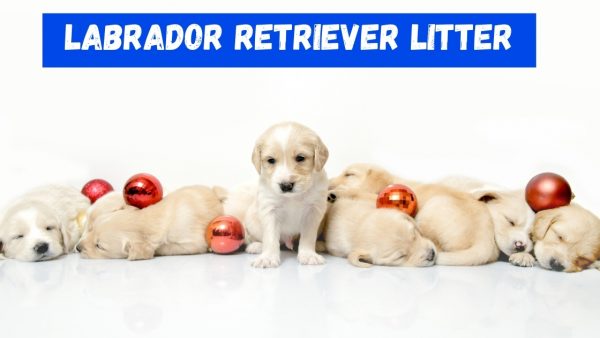
Once you have located the source, the next step is to choose the right puppy from the litter. When you visit a breeder, take a note of general cleanliness and hygiene, and evidence of happy, healthy, well-groomed dogs.
It is helpful if you can see closely related adults, as this will give an indication of how the puppies may turn out.
When you visit the litter, you should assess the mother’s temperament. She should be friendly and confident, with no signs of nervousness or aggression.
Do remember that she would not be looking her best, having recently given birth, but you will get an idea of her general health and appearance. It is essential that you see the mother with her puppies, as this will tell you a lot about temperament.
The bitch should appear calm and relaxed, and she should be quite happy to show off her puppies. The puppy’s father may not live nearby for you to inspect him, but you should make inquiries about his temperament and health or you can see the photo of what he looks like.
Temperament is the most important factor to assess. You are now going to see the litter. Ask the breeder for all the puppies to be taken out on a lawn or an open area, and observe them at play for some time from a distance. Eliminate the shy and bad-tempered pups.
Choose one from those that seem balanced in temperament, healthy, bright alert, and lively. Your final selection, however, should depend on the advice of your vet, particularly if you have never owned a dog before.
One should procure a puppy at eight weeks old. However, it is possible to rear a six-week-old puppy. At six weeks you can certainly assess the lay of shoulder, topline, tail set, turn of stifle, the sufficiency of bone, type of feet, and coat.
The Head can still change a lot, but you can tell if you have good ear placement, and assess the length and width of the muzzle, and the eye shape. Teeth should be checked to confirm the bite is scissor – top incisors just lapping the bottom.
Body coats can be difficult to assess. The rather woolly puppy coats, with only a few longer guard hairs coming through, are preferable to another coat at that age. The healthy puppy is active, alert, playful, and no nasal discharge.
The coat should be shining and soft without dandruff. There should be no ectoparasites such as ticks, lice, or fleas. The anal region should be clean with no signs of diarrhea. There should be no visible deforming of the limbs.
Deciding on a male or female puppy

Deciding on a male or female puppy is a matter of personal preference. It is an established fact that females are more lovable and affectionate than male dogs.
Female dogs, as a general rule, are much easier to train, they are more faithful, and can have puppies (if you desire) that can be sold for a profit. With the female, her only disadvantage is her “heat” period.
There is very little difference between male and female Labradors, while some people prefer bitches and other dogs, both have plus and minus points. There are no significant character differences between the male and female labs. There is little difference in temperament between males and females.
If you have a dog, be aware of how he develops sexually, and make sure he has no opportunity to wander off. But Labradors are not usually great wanders. The adult male is a little larger and heavier than the female. However, a bitch comes in a season twice a year and, unless you plan to neuter, you will have to ensure she is kept away from males during this time.
If you decide on sterilization, this should be done after the first season. The male is bigger and stronger than the female. However, this is purely a matter of personal choice and everyone has their own feelings on the subject.
If you want to breed then of course you need a female. Color – Coat color is another matter of personal preference_ Labradors can be black, yellow, or chocolate colored. The yellow color ranges from cream to red fox.
Young yellow Labs tend to have a little pink pigmentation, particularly on the nose. Regardless of color, they are all one breed, with the same height, weight coat texture. temperament and intelligence. All three colored varieties shed their coats. when it comes to shedding
If you are planning to breed, I would not recommend starting with a bar of chocolate. However, every dog has its own personality, so a new dog really is a new dog, regardless of sex or color.
There are several kennel clubs in India, while buying a kennel club registered puppy, remember to collect the registration certificate. The pedigree certificate gives detailed information about the parentage of the puppy. It is not a guarantee of good health.
All purebred dogs have a pedigree. The pedigree does not imply that a dog is of show quality, but is simply a chronological list of ancestors. Also, registration papers only guarantee that a dog is a particular breed, nothing else. Neither paper is a guarantee of the health or quality of your dog.
Nevertheless, do check the pup’s age, which locally should be 6-7 weeks at the time of purchase. Pups that have not been socialized with people by the age of 10 weeks may never accept humans without showing some sign of fear. It is therefore to avoid Labs pups over the 10 week age. It is advantageous to choose a puppy for three important reasons –
- The puppy is not attached to anyone when you get him.
- He is more easily trained
- You will have him with you longer
Puppy Test

Social attraction – Put the pup on the ground and move a little away from it. Then clap your hands. Does the pup come towards you, tail up and happy, or does it tentatively creep over to you with its tail held low?
This test indicates how sociable and confident the pup is. If it takes no notice at all, it is likely that it has a strong independent streak that could become quite a problem later on. Walk away from the pup slowly and deadly in one direction. If the pup follows, what does it do?
If it bounces around in front of you playfully this means that it is confident. If it grabs your trouser leg, swings on your saree, or makes to chew your feet, it will probably turn out to be “bossyboots” and will want to pack leader the whole family.
These tests are only indications of the tendencies of a pup’s personality but they are reliable enough to avoid getting a totally unsuitable pup for someone such as a child or an elderly person.
A pup’s behavior will show modifications from its personality type according to its reaction to its new environment. In this way, a stable home environment while a stressful environment can make the most placid pup neurotic.
Welcome labra Puppy at home

From the moment of birth, a puppy is changing and developing day by day, week by week, in many different ways. Whether you are caring for a litter of puppies born to your own bitch, or you are the new owner of a diminutive canine pet, this is a delightful period.
Many dogs exhibit “puppy-like” behavior all their life, but, strictly speaking, puppyhood ends at 12 months. It is the time when a day is at its most appealing – discovering new experiences, making friends, learning to play, bark, explore. eat solid foods.
Welcoming a puppy into your home is particularly exciting. Make sure you are prepared and that both the house and garden are safe.
Queries for the breeder
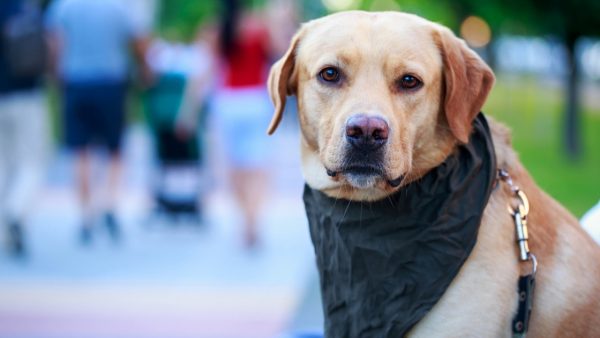
If you have not already consulted the breeder. Now is the time to find out about the following.
Pedigree:
If the puppy is purebred the breeder will give you its pedigree
Vaccination:
Find out which vaccination the puppy has already had and asked for the relevant veterinary certificate. The breeder should tell you when the puppy was last dewormed
Feeding:
Ask exactly what the puppy has been fed on. You may not continue with the same diet, but any changes should be gradual and not sudden. In any case, keep the puppy on the same food for at least the first few days.
After few days, change the diet, wish advice from your vet to one which suits your convenience, including eggs, milk, breed, rice, vegetables, meat, or ready available commercial food. At first, your puppy will eat several small meals a day
How do I make my puppy feel secure?

A bed of its own makes a very important contribution to the puppy’s sense of security in its new home. It will certainly miss its mother, brothers, and sisters and previous home so will benefit from having its own “territory”.
Choose a place in the house where you intend your puppy to sleep and this is a matter of personal choice. However, you must ensure that the pet is located somewhere free of drought and out of the main thoroughfare so that the dog can rest in warmth and comfort.
At first, you will want your puppy to sleep inside the house, you may even want to let it sleep in your bedroom. Make a special bed on the floor in summer and box or a puppy crate in summer.
It may cry the first night because it is lonely for its mother and littermates. Don’t let it sleep with you. You will soon have a full-grown dog sleeping in your bed, and you would not be able to make it leave.
The first bed doesn’t have to be elaborate – a cardboard box with the front cut down and holes all around for proper ventilation provide a good start. During the winter months, the bed should provide protection from drought.
The only bedding needed is a newspaper with a folded blanket on top. Once the teething stage is over and the puppy chewing less- you can provide a – sturdier bed This can be plastic or cane with bedding of some washable material.
An adequate number of newspaper sheets should be used to cover the floor of the pen to soak up Moe’s urine. A few rubber toys for the puppy to play with and chew on should also be there.
The wire crate can be used at night time, and it is also useful for containing your puppy for short periods during the day.
When your puppy is older, decide whether it will live mostly indoors or outdoors. If your dog is going to live outside, it should have a doghouse. The clog house has to be big enough for your dog to move around in it.
First, allow the puppy to go out into the garden, stretch his legs and relieve himself. Bring him inside and let him meet the rest of the family. which may also include other pets.
All introductions should be calm if you have young children. make sure they do not get excited. They must realize that a puppy needs a great deal of sleep.
The First Night of Puppy

This can be a traumatic experience for the owner as well as the puppy. Just before bedtime give the puppy an opportunity to relieve itself again. Almost inevitably, your first few nights’ sleep will be disturbed.
The homesick puppy will be upset at night when you and your family disappear to bed and will probably cry. There are two appearances to this.
You can ignore the crying until the puppy settles down. Never punish it for crying, this only increases its misery. Naturally, your pup feels he has been abandoned, and he will cry for attention. A radio playing quietly can help the “setting in” process. After a quiet night praises your puppy.
Weaning and separating the puppy from his mother and siblings is a traumatic experience for him. All puppies cry when left alone, especially at night, this is normal. Make sure that he is protected from cold and draught and has a fan or cooler during the summer months.
Best Dog Food For Labrador Retrievers
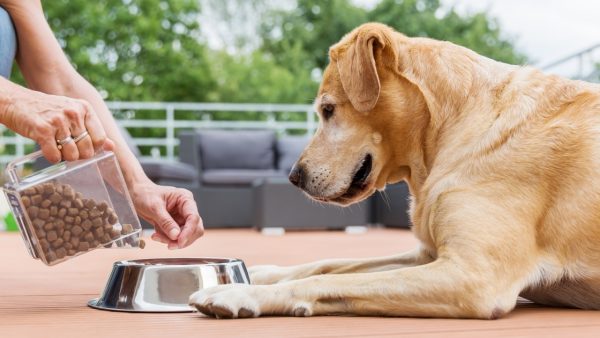
Labrador Retrievers love to run and play but when you notice that your dog is starting to get muscle cramps after your morning run, it’s time to take notice and look at the possible causes.
Question:
What is the best dog food for my very active labs? I recently switched dog foods (about 6 months ago) from Canidae to Diamond brand. I have noticed my 4-year-old chocolate lab cramping up after our daily runs…could there be a connection or do you think he might have a deficiency of some sort?
Answer:
Labrador Retrievers are naturally active and all Labs need a diet that is balanced with all the nutrients and minerals for strong bones and hips, oily skin, and dense coats.
Labradors are also prone to many food allergies. Usually, the allergies are centered on gluten and animal by-products.
If you notice your dog is cramping after a workout though, it may not be the food but rather dehydration and lack of enzymes. Your dog is an athlete and although it isn’t wise to give it Gatorade, you need to replenish the enzymes and nutrients to rebuild those muscles.
1. Has your dog checked by a veterinarian who specializes in large breed dogs? The vet should check for any joint or bone problems in order to rule out a medical condition.
2. Make sure you are feeding your pup the right kind of food. As per the experts, Holistic and raw diets are the best food for Labrador Retriever. I always recommend Eagle Pack Holistic as it is made in the USA and was one of the few to not be recalled during the dog food scare.
3. Warm-up to the exercise. Just like humans, dogs need to slowly warm up to a run. Start with a slow walk and build-up to the run. When you are done with your run, bring it down to a walk for a while to let your pup cool down and start the healing process on those muscles and joints.
Remember that your dog uses their muscles and bones the same way as a human being. Think about what you can do for a human to help with muscle cramps and speak to your veterinarian about applying those methods to your beautiful Labrador Retriever.